When you picture a fall field, what comes to mind?
Pumpkins, tall cornstalks, maybe even a friendly scarecrow standing guard.
Scarecrows have been around for thousands of years from ancient Egypt to farms in Asia and Europe, all created to solve the same problem: keeping birds away from crops.
A scarecrow is really just an invention, a creative way humans engineered protection for their food. And that makes it a perfect inspiration for your preschool STEAM classroom.
This October, invite your preschoolers to step into the role of inventors by designing and building their own scarecrows.
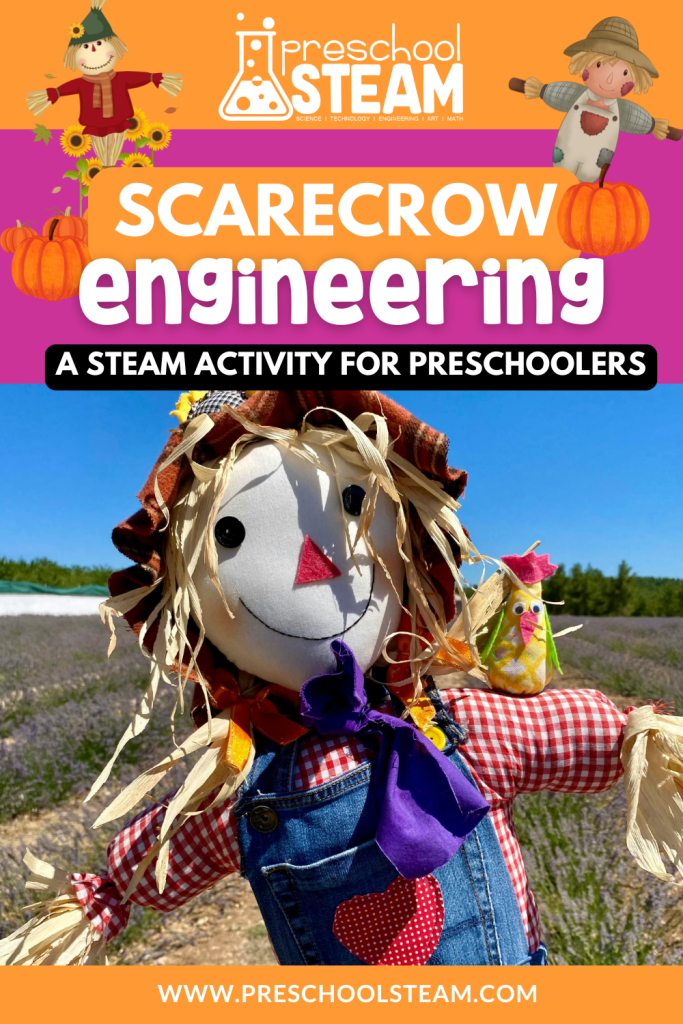
Picture Book Connection
Read: The Scarecrow by Beth Ferry
This gentle story tells of a scarecrow who discovers friendship in the middle of a field. It’s a beautiful way to introduce the idea of scarecrows and spark children’s curiosity about why we make them.
STEAM Challenge: Build a Mini Scarecrow
Question to Ask:
“How can we build something that will stand tall in the garden and help protect plants?”
Materials:
- Craft sticks or straws
- Recycled materials (paper bags, tissue paper, fabric scraps)
- Rubber bands or tape
- Play dough
- Markers
- Natural loose parts (hay, twigs, leaves)
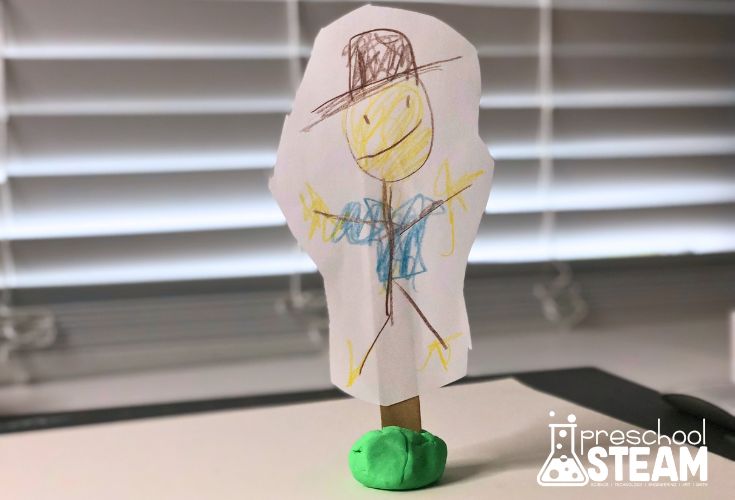
Step 1: Explore Scarecrows
Show children pictures of scarecrows from around the world. Some look silly, some look scary, and some are works of art.
Ask:
- “What do you notice about their arms and legs?”
- “How do they stand up in the field?”
- “Why do you think farmers use scarecrows?”
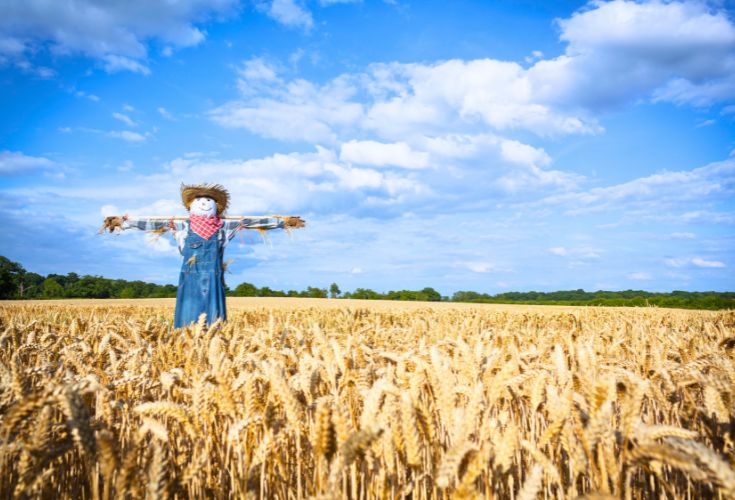
Step 2: Design Your Scarecrow
Invite children to sketch or imagine their scarecrow. Will it wear a hat? Have long arms? A funny face? Encourage them to also think about the structure: How will it stand without tipping over?
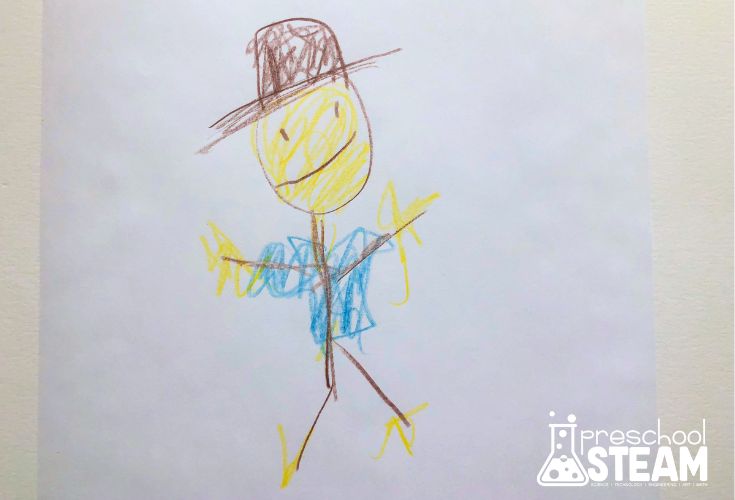
Step 3: Build and Test
Using craft sticks, paper, and natural materials, let children bring their designs to life.
As they build, ask:
- “Does it stand up?”
- “What happens if it tips over?”
- “How can we make it stronger?”
Encourage simple redesigns, like adding another stick for support, widening the base, or making lighter arms.
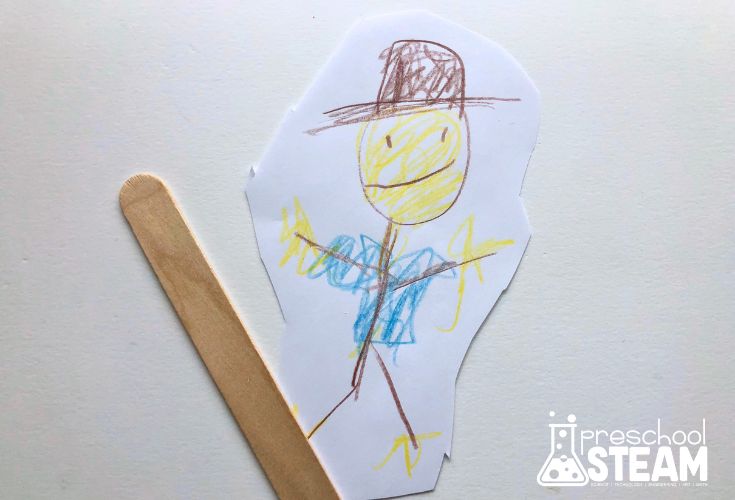
🔄 STEAM Connections
- Science: Learn why farmers use scarecrows and how birds respond.
- Technology: Look at how different cultures have designed scarecrows over time.
- Engineering: Design, build, test, and improve structures that can stand tall.
- Art: Decorate scarecrows with creative costumes, faces, and personalities.
- Math: Compare heights — which scarecrow is tallest? Which is shortest?
Teacher Tip
Keep the focus on creativity, not perfection. Scarecrows don’t have to be scary — they can be silly, kind, colorful, or even superheroes. Invite children to share their scarecrow’s “story” as part of the activity: “Mine has rainbow arms!” or “My scarecrow scares away dragons, not birds.”
Scarecrows are a wonderful reminder that inventions start with a problem to solve. By exploring the art and engineering of scarecrows, preschoolers practice observation, creativity, and problem-solving — all while connecting to the season. And who knows? Their ideas just might inspire the next great invention for protecting gardens.
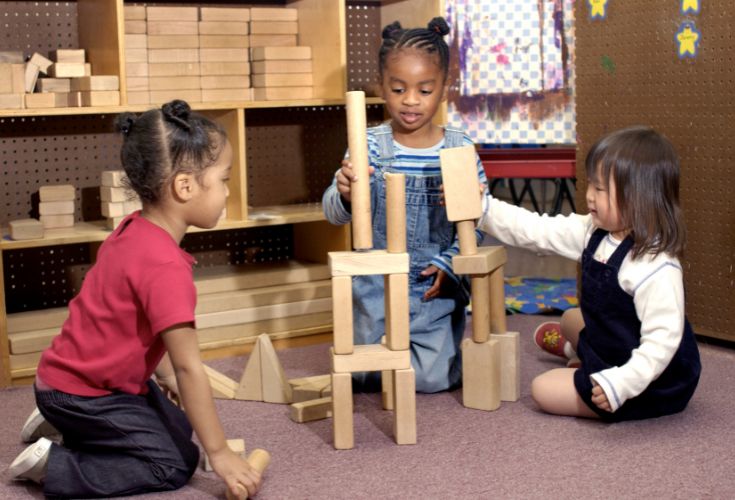
Leave a Reply